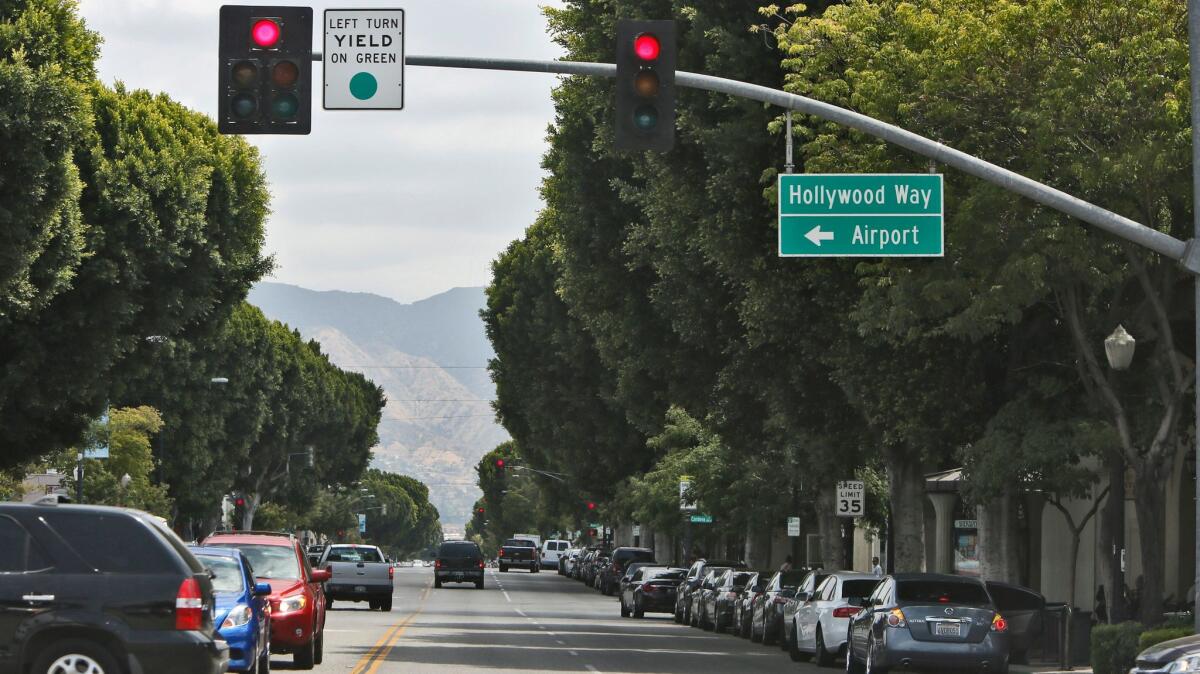Burbank City Council briefed on city’s urban reforestation plan

When Burbank decided to move forward with its reforestation plan in May, some residents were surprised to hear that more than 400 trees would be removed and replaced along Magnolia Boulevard over the next decade.
However, there are areas throughout the city that will require certain species of trees to be replaced with ones that are more compatible with the environment while still providing the shade and aesthetics residents want.
Glen Williams, the city’s landscape and forestry services superintendent, outlined the challenges Burbank faces when it comes to maintaining the city’s urban forest during a City Council meeting Tuesday night.
He said city officials need to keep in mind several factors when choosing a new tree to plant in the city, such as whether the species has any disease or pest issues, how sustainable and drought tolerant the tree is, its leaf and fruit litter as well as final size and availability.
While many people like ficus, ash, elm and sycamore trees, Williams said each of those species comes with challenges.
Though many people appreciate the shade provided by the ficus trees along Magnolia, city officials have said that species of tree eventually becomes a nuisance. The trees have been known to grow into power lines, damage sidewalks and pipes with their roots and create excessive litter with their leaves and fruit, according to a city report.
Elm trees do not cause an annoyance to the public, but they can fall victim to Dutch elm disease, a fungal disease that has been affecting elm trees across the country since the 1930s, Williams said.
He also cautioned council members against having a large number of ash trees planted in the city. The species has been the target of the emerald ash borer, a small beetle that has been infecting and killing ash trees in the Midwest and along the East Coast since the late 1990s.
The emerald ash borer’s larvae eat the inner bark of ash trees, making it difficult for the tree to get its nutrients, according to the U.S. Department of Agriculture Forest Service and Michigan State University.
Similarly, the polyphagous shot hole borer, an invasive species of beetle that was discovered in Southern California in 2003, goes after sycamores and other varieties of trees, Williams said. Unlike the emerald ash borer, the minuscule polyphagous shot hole borer kills trees by infecting them with a fungus that resides in its mouth. The fungus acts as a pathogen, ridding the tree of any nutrients.
Williams said 60 trees in Johnny Carson Park had to be removed because they had been infested with polyphagous shot hole borers.
“There is a treatment for the polyphagous beetle,” Williams said. “The problem is that it’s about $100 to $125 per year [per tree] to treat it.”
Though there are many trees that can be affected by a small beetle or diseases, Williams suggested a few species that he thinks would work well in Burbank and are not so susceptible to fungal or insect invasion.
One of the trees he favors is the Guatemalan holly, which can grow up to be 40 feet tall and provide a good amount of shade. He also likes the Nile tulip tree and the African tulip tree, both of which he said have nice foliage and big flowers.
anthonyclark.carpio@latimes.com
Twitter: @acocarpio
